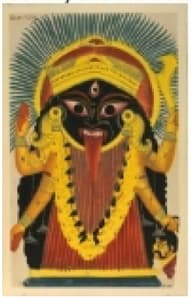Nehru's was a many sided personality. He enjoyed reading and writing books as much as he enjoyed fighting political and social evils or residing tyranny. In him, the scientist and the humanist were held in perfect balance. While he kept looking at special problems from a scientific standpoint. He never forgot that we should nourish the total man. As a scientist, he refused to believe in a benevolent power interested in men's affairs. but, as a self proclaimed non-believer, he loved affirming his faith in life and the beauty of nature. Children he adored. Unlike Wordsworth, he did not see him trailing clouds of glory from the recent sojourn in heaven. He saw them as blossoms of promise and renewal, the only hope for mankind.
Which of the statements reflects Nehru point of view?

Important Questions on UCEED Mock Test Paper 9
Question given below consists of a statement, followed by three arguments numbered I,II and III. You have to decide which of the arguments is a 'strong' argument.
Statement: Should all the profit making public sector units be sold to private companies?
Arguments:
I. Yes. This will help the government to augment its resources for implementing the development programmes.
II. No. The private companies will not be able to run these units effectively.
III. Yes. There will be a significant improvement in the quality of services.
IV. No. There would not be job security for the employees at all the levels.
Have you ever wondered what keeps a hot air balloon flying? The same principle that keeps food frozen in the open chest freezers at the grocery store allows hot air balloons to fly. It's a very basic principle: Hot air rises and cold air falls. So while the super-cooled air in the grocery store freezer settles down around the food, the hot air in a hot air balloon pushes up, keeping the balloon floating above the ground. In order to understand more about how this principle works in hot air balloons, it helps to know more about hot air balloons themselves.
A hot air balloon has three major parts: the basket, the burner, and the envelope. The basket is where passengers ride. The basket is usually made of wicker. This ensures that it will be comfortable and add little extra weight. The burner is positioned above the passenger's heads and produces a huge flame to heat the air inside the envelope. The envelope is the colorful fabric balloon that holds the hot air. When the air inside the envelope is heated, the balloon rises The pilot can control the up-and-down movements of the hot air balloon by regulating the heat in the envelope. To ascend, the pilot heats the air in the envelope. When the pilot is ready to land, the air in the balloon is allowed to cool and the balloon becomes heavier than air. This makes the balloon descend.
Before the balloon is launched, the pilot knows which way the wind is blowing. This means that she has a general idea about which way the balloon will go. But, sometimes the pilot can actually control the direction that the balloon flies while in flight. This is because the air above the ground is sectioned into layers in which the direction of the wind may be different. So even though the pilot can't steer the balloon, she can fly or higher or lower into a different layer of air. Some days the difference between the direction of the wind between layers is negligible. But other days the difference is so strong that it can actually push the balloon in a completely different direction! Using the passage as a guide, it can be inferred that which of the following statements is true?
Which of these paintings is/are by Salvador Dali
Identify the Indian traditional Art below

In this question identify the new shape that could be constructed if the two example shapes were combined. No other change should be made to the two shapes other than combining them.

Identify the 3D shape's net.

Identify the answer shape, which has been rotated but is otherwise the same as the question shape.

